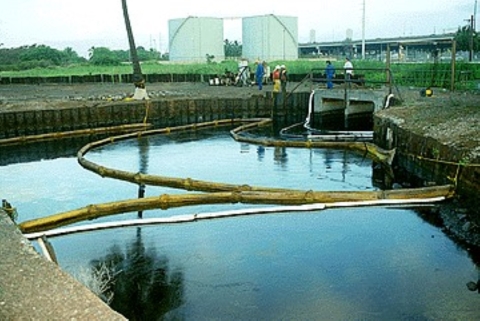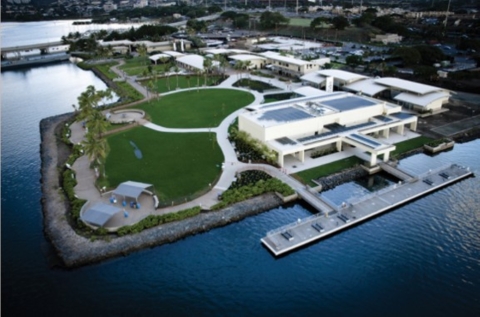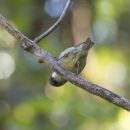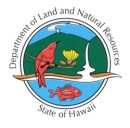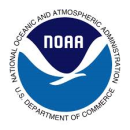States
HawaiiEcosystem
WetlandINTRODUCTION:
The Natural Resource Trustees for the Chevron Pipeline Oil Spill of 1996 are proposing to use approximately $850,000 for the construction of an 8.8 acre wetland project to enhance the Pouhala Marsh wildlife sanctuary for the benefit of endangered waterbirds breeding in Oʻahu, and to fund Trustee Council administration and oversight. The funds are part of the settlement to restore environmental damage caused by the spill of at least 39,000 gallons of bunker fuel oil from a Chevron Products Company pipeline adjacent to Pearl Harbor.
The pipeline spill incident:
At 1:30 a.m. on May 14, 1996, a Chevron Products Company (Chevron) pipeline ruptured at a thin spot caused by external erosion and began discharging No.6 bunker fuel oil adjacent to the Hawaiian Electric Company (HECO) Waiau Power Plant in Pearl City, Oahu, Hawaii. The released oil entered the nearby Waimanu Stream, flowed downstream and entered the East Loch of Pearl Harbor. While in the fresh water of Waimanu Stream, the oil remained mostly submerged and then floated to the surface upon entering the denser salt water of Pearl Harbor.
In Pearl Harbor, the floating oil spread widely around East Loch, fouling shorelines in the process. The spill created a sheen of floating oil throughout East Loch, covering approximately 2,290 acres of open water during the first six days of the spill event. The shoreline and boat dock Visitor Center of the Arizona Memorial were also contaminated with oil
Oiling of shorelines and intertidal areas affected freshwater and saltwater wetlands, mangroves, mudflats, rocky shorelines, sandy beaches, riprap, seawalls and piers. These oiled habitats support many valuable fish and wildlife species and the prey and forage items for these species. The contamination of the water column and sediments of Waiau Marsh and Pearl Harbor by this oil may also have caused impacts to egg, larval, juvenile and adult stages of recreationally and commercially valuable finfish and invertebrates which utilize the Pearl Harbor estuary.
The Natural Resource Trustees (State of Hawaii, US Fish and Wildlife Service, National Park Service, and US Navy) assessed the environmental injuries and formulated a plan to develop compensatory restoration actions for injuries to the following natural resources and services:
- Freshwater marsh habitat in Waiau Stream
- Intertidal habitat in Pearl Harbor
- Subtidal habitat in Pearl Harbor
- Water column habitat in Pearl Harbor
- Human uses services related to the U.S.S. Arizona Memorial
On April 12, 1999, the Trustees released the Draft Restoration Plan/Environmental Assessment (RP/EA) for the May 14, 1996 Chevron Pipeline Oil Spill.
On September 13, 1999, the United State District Court for the District of Hawaii entered a partial consent decree, settling the Trustees natural resource damages claims against Chevron. Under the terms of the settlement, Chevron agreed to pay up to $600,000 for the Trustees assessment costs, to repair rip rap at the U.S.S. Arizona Memorial Visitor Center, and to pay $1,650,000, plus interest, in natural resource damages and Hawaii civil penalties. Of the $1,650,000 payment, Chevron agreed to pay $1,350,000 to the Trustees for natural resource injuries ($550,000 for National Park Service injuries and $800,000 for other natural resource injuries), $100,000 to Hawaii as a civil penalty, and an additional $200,000 to the Trustees for supplemental environmental projects
In the Final 1999 RP/EA, the Trustees selected two preferred ecological restoration alternatives and two preferred lost human use restoration alternatives for implementation: Pouhala Marsh Enhancement; Waiawa Unit Mangrove Removal; Shoreline Protection System; and Visitor Center Boat Dock.
1. Pouhala Marsh Enhancement
The Trustees proposed to fund the restoration of eight acres of degraded and partially filled marsh and establish an endowment for the maintenance of Pouhala Marsh for a total of $950,000.00. In addition to the funds to be provided by the Natural Resource Trustees, a significant portion of the project would be supported by community volunteers and by matching and non-matching funds provided by partnerships to further enhance the habitat for wildlife. In 2003, the Trustees also authorized the dispersal of $250,000.00 to the State of Hawaii, Department of Land and Natural Resources for the initial debris and soil removal at Pouhala Marsh. The Pouhala Marsh enhancement was begun by the State of Hawaii, but the NRDA funds have not been released for the wetland restoration.
2. Waiawa Unit Mangrove Removal
The Pearl Harbor National Wildlife Refuge serves as habitat for four species of federal and state endangered endemic waterbirds and 25 other species of federally protected migratory birds including shorebirds and waterbirds. The Trustees approved the dispersal of $200,000.00 to FWS in 2003 for implementation of the mangrove removal work at Waiawa. The FWS used the funds to complete the mangrove removal and revegetation work at Waiawa, but a fence was never constructed.
3. Shoreline Protection System
Pursuant to the consent decree, Chevron completed this restoration work at the Arizona Memorial. This project replaced the existing, inadequate shoreline protection system with a new permanent riprap system. The project area encompassed the shoreline from the Visitor Center dock to the ferry landing adjacent to the Visitor Center, approximately 600 feet.
4. Visitor Center Boat Dock
The consent decree specifically awarded $550,000.00 of the natural resource damages settlement to the NPS for their lost human use injuries. In 2000, $550,000.00 was dispersed to NPS and the visitor center boat dock construction has been completed.
PROPOSED POUHALA MARSH ENHANCEMENT PROJECT
There are currently approximately $850,000 in recovered natural resource damages, including earned interest, remaining in the NRDAR fund for restoration for the Chevron Pipeline Oil Spill. The Trustees propose to use the remaining funds to complete the Pouhala Marsh Enhancement Project selected in the Final RP/EA, and to reimburse the Trustees for the costs of additional restoration planning and administration.
The primary goal of the Pouhala Marsh Enhancement Project is to provide habitat for waterbird nesting, foraging and loafing, while recovering wetland habitat, watershed function and native plant communities. Secondarily, the project will continue to foster community involvement and stewardship, and provide educational opportunities to community groups, schools and the general public.
The Pouhala Marsh Enhancement Project will be accomplished in two phases, over five years. Phase I will be the construction of an eight-acre restoration pond. Phase II will be the expansion of available waterbird habitat and wetland ecosystems through community activities.
Information gathered from the onset of the project has provided a road map of strategies and tactics needed to increase productivity and contribute to waterbird recovery in the Pearl Harbor basin.
PUBLIC COMMENT REQUEST:
The Trustees are requesting review and comment of the Draft Restoration Plan Addendum/Supplemental Environmental Assessment for the May 14, 1996 Chevron Pipeline Oil Spill. The document can be downloaded at this link: (need to prepare the link and insert in PIFWO website). Written Comments will be accepted for a period of 30 days from the date of posting on the website.
- You may submit written comments and materials to the field supervisor:
- Dan Polhemus, Ph.D.
Pacific Islands Fish and Wildlife Office
300 Ala Moana Blvd. Rm. 3-122
Honolulu, HI 96850
- Dan Polhemus, Ph.D.
- You may send comments by email to dan_polhemus@fws.gov. Please include "Chevron Pearl Harbor Draft Recovery Pan Addendum" in the subject line.

